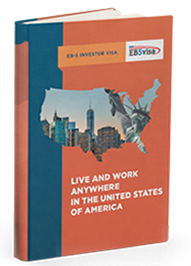Explore the glossary of commonly used important EB-5 terms in the ‘Terminology’ given below and help yourself to better understand the EB-5 Investor Visa Program.
- Alien
- AOS
- Application Support Center (ASC)
- Biometrics
- Board of Immigration Appeals (BIA)
- Capital
- CFR
- Commercial Enterprise
- Conditional Resident
- Corporation
- CPR
- Department of Labor (DOL)
- Department of State
- Dependents
- Direct Job
- Fingerprint Clearance
- Green Card Holder
- Holding Company
- I-485
- I-526
- I-829
- Immigration Act of 1990
- Immigration Attorneys
- INA
- Indirect Job
- Investor Pilot Program
- Joint Venture
- Labor Certification
- Limited Partnership
- LPR
- Naturalization
- NVC
- Partnership
- Petition
- Petitioner
- Priority Date (date of filing)
- Regional Center
- Rural Area
- Sole Proprietorship
- Targeted Employment Area (TEA)
- Tenant Occupancy
- Travel Permit
- Troubled Business
- USCIS
Any individual who is not currently a permanent resident or a citizen of the United States, but is present on a non-immigrant visa, is out of status or has entered the country without inspection is regarded as an alien.
AOS stands for ‘Adjustment of Status’ that is done through the filing of the I–485 form by the primary applicant with the USCIS.
The application support center in the United States is the center that takes the fingerprints, etc. of the visa applicants.
Biometrics is an essential part of applications for permanent residency and citizenship in the United States, comprising of recording of the applicant’s fingerprints, photo identification, etc.
The Board of Immigration Appeals, BIA for short is the office within the Executive Office of Immigration Review. Its main function is to administer the appeals from the Immigration Court.
In the EB-5 context, capital means the investment including the cash, equipment, inventory, cash equivalents, indebtedness as well as other tangible and intangible property secured by the principal applicant and used to invest in the business venture proposed under the EB-5 application.
CFR refers to ‘Code of Federal Regulations’ which is the code of general and permanent rules and regulations published by the executive departments and agencies of the American Federal Government and is published in the Federal register.
A for-profit activity to carry out lawful business – sole proprietorship or partnership or a holding company or a joint venture or a corporation or a business trust or any publicly or privately owned entity is known as a commercial enterprise.
A conditional resident is an EB-5 applicant or non–American citizens who married American citizens and has the rights and the obligations as those of the lawful permanent residents. However, they have certain conditions they need to fulfill in a stipulated time and their permanent residency has a validity of two years.
A corporation is formed by exchange of money, property or both for the firm’s capital stock by the shareholders. They file articles of incorporation with the government, thus registering themselves.
CPR stands for Conditional Permanent Residency given to the EB-5 applicants as well non – American citizens who marry American citizens. The rights and the obligations of the conditional permanent residents are the same as those of the lawful permanent residents however, there are certain conditions they need to fulfill in a stipulated time period and their permanent residency has a validity of two years.
The department of labor oversees the labor certification process. It provides information and details regarding the availability of qualified American workers. Their help is essential when jobs are generated as part of the EB-5 project.
All the embassies and consulates are monitored and run by the Department of State. This department is also responsible for deciding on the immigrant and non-immigrant visas.
Dependents are the family members of the primary applicant who are dependent on the applicant and their right to immigrate depends upon the principal applicant’s rights. They could be the spouse, as well as his or her unmarried children under the age of 21 years when the applicant files the I–526 with the USCIS.
A direct job is the job generated for qualified employees as a result of the EB-5 project that is actually identifiable and is located within the commercial enterprise into which the primary applicant of the EB-5 visa has invested.
As part of the immigration and visa process, fingerprints are collected and run against FBI computer records to check against possible criminals or suspicious persons before the status of immigration gets adjusted. This is called fingerprint clearance.
A Green Card holder is a lawful permanent resident who does not have any expiry date or conditions attached to his or her permanent residency. An EB-5 applicant becomes a Green Card holder after his I-829 gets approved. Green card is the card given to lawful permanent residents, which is; however, not green in color, it merely has the word “green” in its name.
A holding company is a company whose main function is to own other companies outstanding stock. The company does not produce any goods or services by itself but aims to form a corporate group thus reducing the risk for the owners and allowing the ownership to control a number of companies.
An I–485 is the application form that an applicant is supposed to fill to adjust their permanent residency status to either a conditional one or a lawful one while residing in the United States.
The I–526 is the application form that the principal applicant fills when applying for an EB-5 Visa in order to immigrate to the United States.
The I–829 form is the application form that the principal applicant fills in order to get the status of his permanent residency changed from ‘conditional’ to ‘lawful’. This is done to remove the conditions attached on his Green Card.
It was with the Immigration Act of 1990 that the original Immigrant Act was amended to introduce the EB-5 Visa program for the first time in the United States.
Immigration attorneys are lawyers who specialize and are experts in immigration laws of the United States and help visa applicants obtain their desired visas. Having them on board is not mandatory but they are helpful in preparing and filing the necessary applications for the visas with the USCIS thereby easing out the whole process for the applicants.
The INA stands for the Immigration and Naturalization Act of the United States. This Act governs the entire process of immigration and naturalization in the United States.
Indirect jobs would be the jobs that would be generated collaterally or as a result of capital investment made by the primary applicant into the commercial enterprise as part of his EB-5 program.
The investor pilot program is the program that allows EB-5 applicants to invest in the government’s pre – approved regional centers while also allowing the applicants to count both direct as well as indirect jobs created in the project for the purpose of meeting the target of creating at least ten new jobs through the EB-5 investment.
A joint venture is formed as a result of a business agreement between two entities or parties that agree to develop and join to form a new entity and create new assets by contributing equity, for a finite period of time. The revenue, and expenses, as well as the assets are shared.
A labor certification is a mandatory requirement for some employment–based visa applications. This certification clarifies that the employer has checked the United States job market to figure out if there would be any United States citizens who are currently willing to fill out the position in question.
A limited partnership is a type of business partnership that has one or more than one limited partners who has a limited liability towards the debt of the business venture he or she has partnered in, based on the extent of their investment in the business venture, and one or more general partners who generally have a greater liability in the business venture.
LPR stands for Lawful Permanent Residents of the United States. Lawful Permanent Residency does not have any expiry date or conditions attached to it. An EB-5 applicants becomes a LPR after his I 829 gets approved.
Naturalization is the complete process including the interview, test and the ceremony following which an American permanent resident becomes a full–fledged American citizen.
NVC stands for National Visa Center that is in – charge of collecting the immigration visa fees as well as the immigration visa documents while also setting up the visa interviews for the applicants and his or her dependents as part of the immigration consular processing.
A partnership is when two or more people join hands to carry out a single business or trade and each person makes a contribution – could be money, property, labor, skill, time, etc. and expects to share the profits and the losses made by the business.
In the EB-5 context, a petition refers to the submission that is made to the USCIS by the principal applicant requesting to accord the right to immigrate to the principal applicant, as well as his dependents in the EB-5 category.
When an American citizen or a lawful permanent resident applies on behalf of an alien for an immigrant or a non-immigrant visa to the United States, the former is known as a Petitioner.
At the time of applying for an adjustment one of the first things that is checked is the priority date of the applicant. The priority date is the date of filing of the application which decides whether the applicant is eligible for filing for an adjustment or not.
A regional center is an economic unit that works towards the promotion of economic development. It may be public or private in nature. Its main aims could be creating employment opportunities, improving the productivity of the region it covers, increasing the capital investment in the region, etc.
Any area that does not fall within the limits of a metropolitan statistical area or within the boundaries of any city or any town that would have a population of at least 20,000 persons; as designated by the Office of Management and Budget; is regarded as a rural area in the United States.
When an unincorporated business is owned by a single owner, it is called as a sole proprietorship. It is the simplest form of business ownership.
Targeted Employment Area in the EB-5 context is defined as any area that either classifies as a rural area or has an unemployment rate of at least 150% of the national average rate and is considered as prime target area for EB-5 investments.
Tenant occupancy is the projected job creation that is attributed to the prospective tenants who would be occupying the commercial space that is created as a result of the EB-5 project investment.
Often EB-5 visa applicants would want to travel back and forth from the United States to other countries as part of work or otherwise. In order to be able to do so, the applicant needs to procure a travel permit which can be applied for when they file their I–485.
Any business that has existed for at least 2 business years and has incurred net accounting losses during the twelve month or twenty – four month period before the priority date on primary applicant’s I–526 application is regarded as a troubled business. The losses incurred by the business should be at least equal to 20% of the business net worth before incurring the losses.
The USCIS stands for the United States Citizenship and Immigration Services. It falls under the United States Department of Homeland Security. Its main functions are administrating the immigration services in the U.S., adjudicating the claims of asylum seekers, issuing the certificates that give authorization for employment in the U.S. to immigrants, adjudicating the petition for non-immigrating workers like those coming on visas like the H1-B to the U.S., granting the lawful status of permanent residency to immigrants and finally, granting the American citizenship to applicants.



 English
English.png) Chinese(Simplified)
Chinese(Simplified) Italian
Italian Polish
Polish Portuguese
Portuguese Russian
Russian Spanish
Spanish




